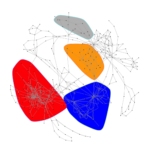Some great news!
Our two papers:
Kovanović, V., Joksimović, S., Waters, Z., Gašević, D., Kitto, K., Hatala, M., & Siemens, G. “Towards Automated Content Analysis of Discussion Transcripts: A Cognitive Presence Case”
Joksimović, S., Manataki, A., Gašević, D., Dawson, S., Kovanović, V., & de Kereki, I. F. “Translating network position into performance: Importance of Centrality in Different Network Configurations”
got accepted for the LAK’16 conference! Preprints [Kovanovic et al – Towards] and [Joksimovic et al – Translating] are also available for download.
“Towards Automated Content Analysis of Discussion Transcripts: A Cognitive Presence Case”
Abstract: In this paper, we present the results of an exploratory study that examined the problem of automating content analysis of student online discussion transcripts. We looked at the problem of coding discussion transcripts for the levels of cognitive presence, one of the three main constructs in the Community of Inquiry (CoI) model of distance education. Using Coh-Metrix and LIWC features, together with a set of custom features developed to capture discussion context, we developed a random forest classification system that achieved 70.3% classification accuracy and 0.63 Cohen’s kappa, which is significantly higher than values reported in the previous studies. Besides improvement in classification accuracy, the developed system is also less sensitive to overfitting as it uses only 205 classification features, which is around 100 times less features than in similar systems based on bag-of-words features. We also provide an overview of the classification features most indicative of the different phases of cognitive presence that gives an additional insights into the nature of cognitive presence learning cycle. Overall, our results show great potential of the proposed approach, with an added benefit of providing further characterization of the cognitive presence coding scheme.
Keywords: Community of Inquiry (CoI) model; content analysis; content analytics; online discussions; text classification
“Translating network position into performance: Importance of Centrality in Different Network Configurations”
Abstract: As the field of learning analytics continues to mature, there is a corresponding evolution and sophistication of the associated analytical methods and techniques. In this regard social network analysis (SNA) has emerged as one of the cornerstones of learning analytics methodologies. However, despite the noted importance of social networks for facilitating the learning process, it remains unclear how and to what extent such network measures are associated with specific learning outcomes. Motivated by Simmel’s theory of social interactions and building on the argument that social centrality does not always imply benefits, this study aimed to further contribute to the understanding of the association between students’ social centrality and their academic performance. The study reveals that learning analytics research drawing on SNA should incorporate both – descriptive and statistical methods to provide a more comprehensive and holistic understanding of a students’ network position. In so doing researchers can undertake more nuanced and contextually salient inferences about learning in network settings. Specifically, we show how differences in the factors framing students’ interactions within two instances of a MOOC affect the association between the three social network centrality measures (i.e., degree, closeness, and betweenness) and the final course outcome.
Keywords: Social network analysis; ERGM; MOOC; Academic achievement;





































